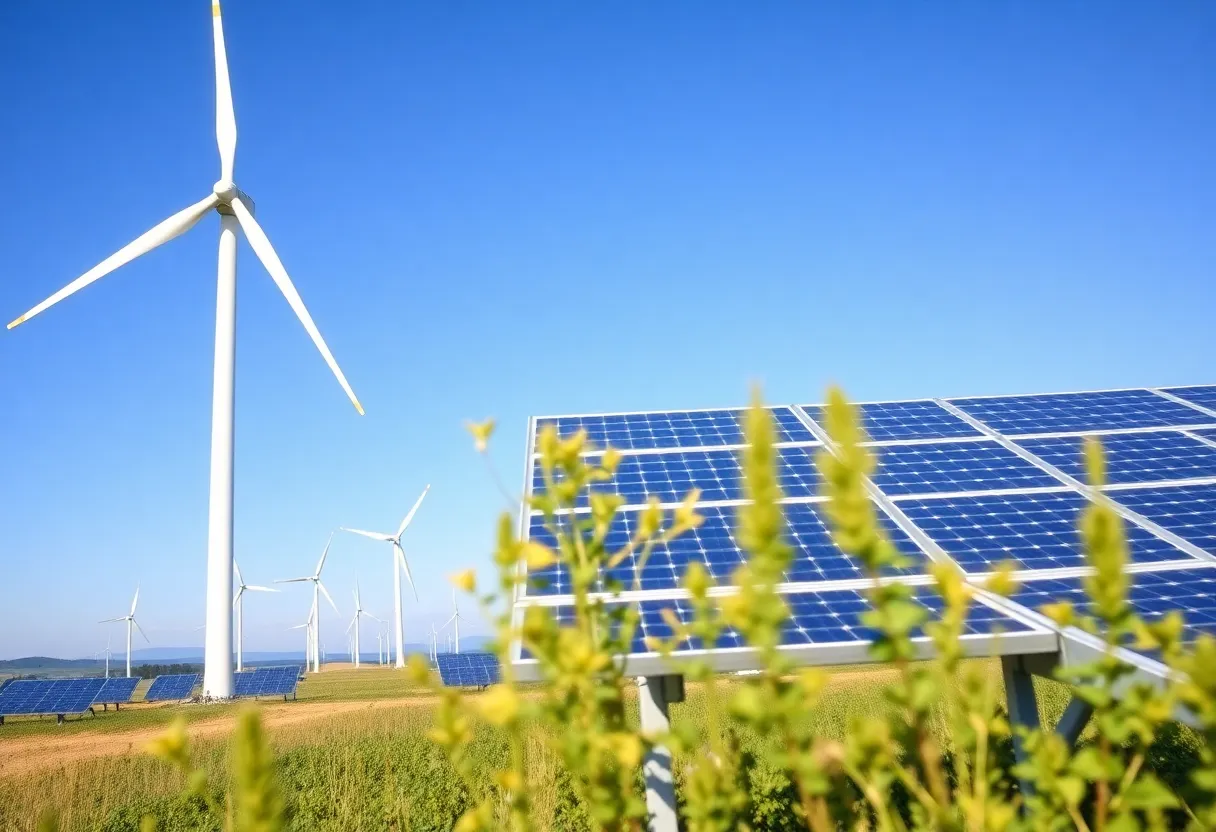Washington D.C., August 19, 2025
News Summary
The IRS has introduced new guidelines that tighten the requirements for wind and solar facilities to qualify for tax credits. The elimination of the 5% Safe Harbor option and a focus on physical work signify stricter conditions for starting construction. These regulations are seen as potentially slowing the growth of low-carbon energy projects amidst ongoing political tensions. The changes will impact projects starting construction after September 2, with industry stakeholders expressing concerns about the future of renewable energy development.
Washington D.C. – On August 15, 2025, the Department of Treasury and the Internal Revenue Service (IRS) introduced crucial guidance affecting tax credits for wind and solar energy facilities. This move comes ahead of an impending construction deadline of July 4, 2026, and represents a tightening of requirements under Sections 45Y and 48E, collectively referred to as the Tech-Neutral Tax Credits. The guidance follows an executive order by President Donald Trump, issued on July 7, 2025, aimed at reducing subsidies for foreign-controlled and perceived unreliable energy sources.
The newly established regulations delineate what constitutes “beginning construction” for wind and solar facilities, a critical factor for securing tax credits before the looming deadline. Under the recently passed One Big Beautiful Bill, construction must commence by July 5, 2026, for projects to maintain eligibility for tax credits when they become operational after December 31, 2027.
One of the most significant changes included in the new guidance is the elimination of the 5% Safe Harbor option for beginning construction across most wind and solar facilities. While the Physical Work Test remains intact, this test requires either onsite construction or offsite work under a binding contract, like equipment manufacturing, to demonstrate that substantial progress is being made.
The announcement maintains the Continuity Safe Harbor, allowing facilities to qualify if they are placed into service within four years following the start of construction. However, it advises documenting construction continuity, although detailed requirements were not provided in the guidance. The new regulations will take effect for projects beginning construction on or after September 2, 2025. Notably, solar facilities producing less than 1.5 megawatts can still utilize the 5% Safe Harbor under certain conditions.
The regulatory updates are perceived as more stringent than past guidelines, emphasizing significant physical work rather than a monetary threshold to prove that construction has commenced. Activities such as surveys and test drilling will not meet the criteria for “physical work of significant nature,” implying that the bar for beginning construction has been raised.
Industry stakeholders have voiced their apprehensions regarding the guidance, suggesting that the enhanced requirements could decelerate the development of low-carbon energy sources and potentially lead to rising electricity prices. Critics argue that the shifts create additional barriers for wind and solar projects, undermining previously established norms from legislative discussions and negotiations.
The changes stemmed from ongoing factions within the Republican party during the passage of the bill, particularly noticeable between moderate Republicans and conservatives favoring tougher regulations on renewable tax credits. In light of the new rules, Senate views have varied, with some expressing satisfaction based on maintaining pathways for industry adaptation and compliance with energy demands.
Overall, the guidance signals a hallmark transition in how renewable energy projects will approach eligibility for tax credits, emphasizing a rigorous standard for demonstrating ongoing construction activities and compliance with the outlined regulations.
FAQ
What is the new IRS guidance for wind and solar facilities?
The new guidance outlines stricter requirements for starting construction on wind and solar facilities to qualify for tax credits, eliminating the 5% Safe Harbor option for most cases.
When do the new regulations take effect?
The new regulations will be effective for projects that begin construction on or after September 2, 2025.
How do the changes affect tax credits for renewable energy projects?
The changes create additional hurdles for projects to secure tax credits, emphasizing on-site physical work instead of monetary thresholds to demonstrate construction commencement.
Key Features of the New IRS Guidance
| Aspect | Detail |
|---|---|
| Effective Date | Projects starting construction on or after September 2, 2025 |
| Elimination of 5% Safe Harbor | Affecting most wind and solar facilities |
| Physical Work Test | Remains unchanged; must show significant physical work |
| Continuity Safe Harbor | Facilities must be in service within four years of construction start |
| Qualifying Small Solar Facilities | Facilities below 1.5 megawatts can still utilize the 5% Safe Harbor |
Deeper Dive: News & Info About This Topic
HERE Resources
Arizona ACC Moves to Repeal Renewable Energy Standards
Arizona’s Clean Energy Boom at Risk Amid Federal Tax Incentives Threat
Tax Credit Cuts Could Spell Trouble for Arizona Residents
Billions in Clean Energy Projects Canceled Amid Uncertainty
Additional Resources
- The Hill: Treasury Guidance on Wind and Solar Tax Credits
- Utility Dive: Treasury Commence Construction for Wind and Solar Tax Credits
- Wall Street Journal: European Renewable Stocks Rise After U.S. Tax Credit Guidance
- Recharge News: Wind Power Stocks Surge After U.S. Tax Credit Specification
- Politico Pro: Treasury Reportedly Tightens Screws on Tax Credits for Renewables
Author: STAFF HERE PHOENIX WRITER
The PHOENIX STAFF WRITER represents the experienced team at HEREPhoenix.com, your go-to source for actionable local news and information in Phoenix, Maricopa County, and beyond. Specializing in "news you can use," we cover essential topics like product reviews for personal and business needs, local business directories, politics, real estate trends, neighborhood insights, and state news affecting the area—with deep expertise drawn from years of dedicated reporting and strong community input, including local press releases and business updates. We deliver top reporting on high-value events such as the Waste Management Phoenix Open, Cactus League Spring Training, and Arizona State Fair. Our coverage extends to key organizations like the Greater Phoenix Chamber of Commerce and Visit Phoenix, plus leading businesses in technology and healthcare that power the local economy such as Intel and Banner Health. As part of the broader HERE network, including HERETucson.com, we provide comprehensive, credible insights into Arizona's dynamic landscape.





